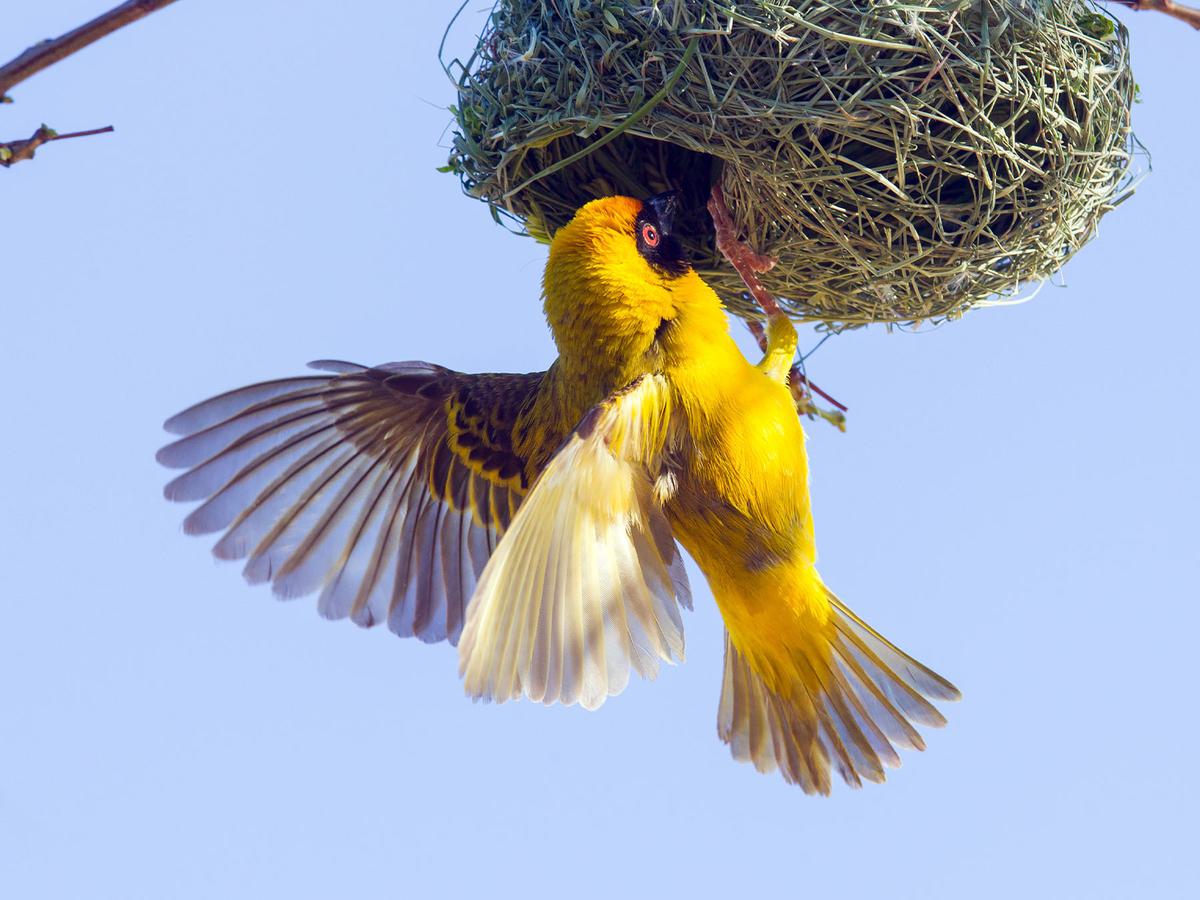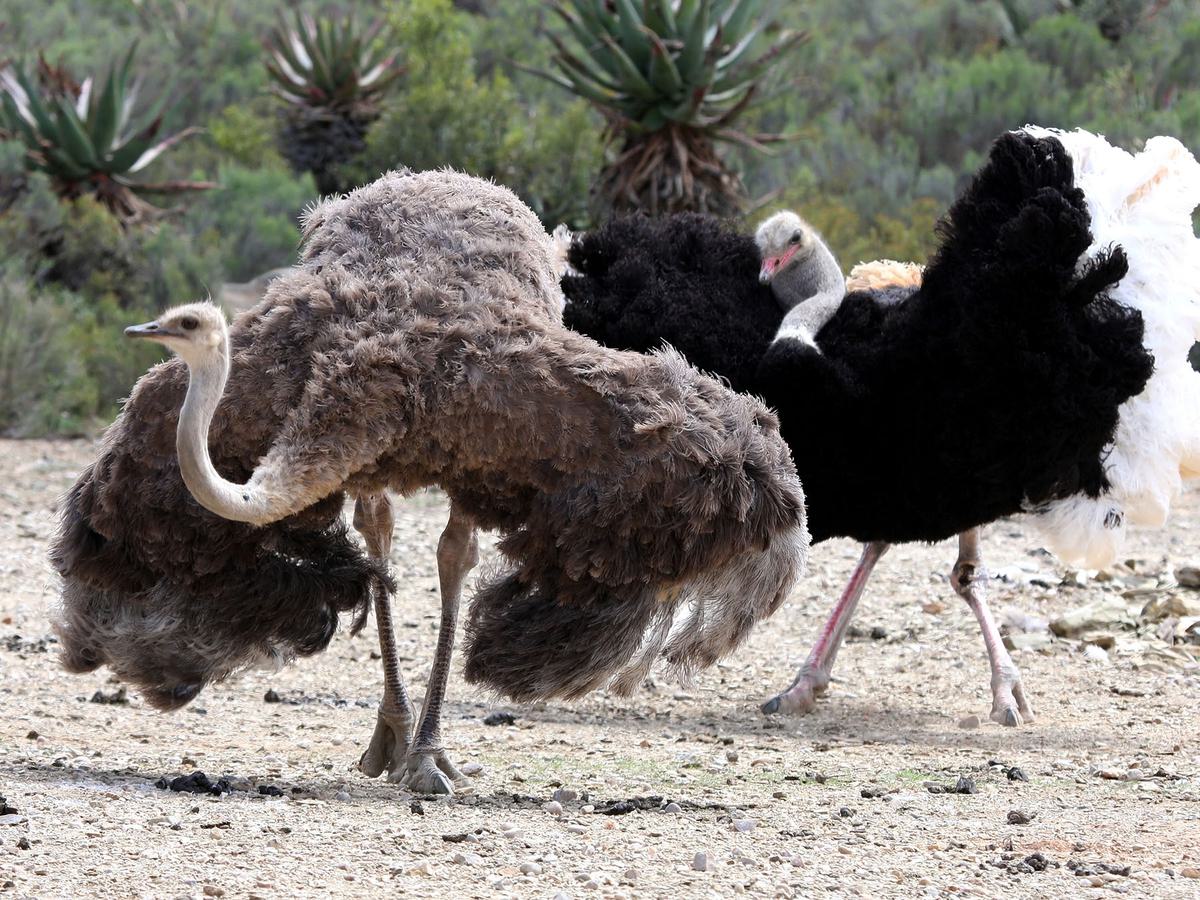Reproductive System

Apart from the unusual monotreme mammals of Australia, the combination of internal fertilization, oviparity (egg-laying), and advanced parental care is unique to avians. From flashy feathers and dramatic displays to the complex internal processes and hormonal changes necessary for fertilization and egg production, there’s a whole lot to learn about the bird reproductive system.
When birds stop breeding, they stop existing, so understanding bird reproduction is not only academic. Protecting birds and their breeding habitats is absolutely vital for breeding programs and the ongoing conservation of wild populations.
In this introductory guide, we’ll provide a broad overview of avian reproductive systems. Read along to learn how new generations of birds grace the globe each year.
Overview of Avian Reproductive Anatomy
Male Reproductive Organs
Male birds produce sperm, which they must deliver to a female to fertilize her eggs. Sperm is produced in two testes that are held internally near the kidneys. From the testes, sperm passes through the epididymis and then the vas deferens or ductus deferens.
Most male birds lack external genitals and transfer sperm through the cloaca, which is the same opening where waste is excreted. Some birds, like Ducks and Geese, do have a penis, which is used for internal fertilization.
Female Reproductive Organs
Female birds produce eggs, which are fertilized internally. Most species have a single ovary, although many Owls and other birds of prey have two.
The single avian ovary connects to a single oviduct, which is a long tract where fertilization occurs, and the egg is covered in a protective shell. The oviduct has several sections, including the magnum, isthmus, and uterus. Sperm is transferred, and eggs are released through the cloaca.
Sexual Dimorphism
Apart from the difference between reproductive organs, many birds show distinctly different physical characteristics between sexes. In many cases, the male has brighter plumage (e.g., Painted Bunting) and ornamental feathers (e.g., Peacock) to attract a female. These differences may be seasonal or visible all year.
Some birds also show distinct differences in size between the sexes, and male Turkeys, for example, are much larger than females. Females may be significantly larger than males, which is often the case in Owls and raptors.

Painted Bunting Female (left) and Male (right). many birds show distinctly different physical characteristics between sexes
The Breeding Season – Preparation and Behavior
Photoperiod and Breeding
Birds usually breed at times of the year when conditions are most suitable for raising their young. Weather conditions and food supply are important factors, and these are often correlated with changing seasons and day lengths.
Birds detect changes in day length using photoreceptors in their retinas, pineal glands, and other parts of the body. Lengthening days trigger hormonal changes that stimulate sperm and egg production.
Courtship Rituals
Choosing a healthy and genetically fit partner is very important since birds can only raise so many young in their lifetime, and chick-rearing is a significant commitment. To make the right choice, birds have evolved to perform various courtship rituals to advertise themselves and win their mate’s heart. Typical examples include dances, display flights, songs, and postures that show off their plumage.
Check out this in-depth guide for much more about bird courtship displays.
Nesting
The embryo within a bird’s egg continues to develop outside of the female’s body, a process which may take several weeks, depending on the species. During this time, birds must incubate their eggs to keep them at the right temperature and protect them from predators and the elements.
Most birds build a nest, but the construction and location of the structure varies hugely across species. Nests may be constructed within a defended nesting territory or a colony, sometimes including thousands of other breeding pairs.
Read this comprehensive guide to learn more about bird nesting habits.
Fertilization and Egg Development
Fertilization Process
Most birds mate by joining their cloacas for the ‘cloacal kiss.’ In this process, sperm is transferred from the male to the female, where it is stored in sperm storage tubules in the oviduct.
Fertilization happens soon after the ovum enters the infundibulum, and interestingly, multiple sperm cells will enter a single egg, but only one will fuse. After fertilization, the ovum is covered in a yolk sac, receives an albumen deposit, and is covered in a protective shell before being laid.
Egg-Laying
Female birds produce ova in their ovaries, which are further developed and covered in a protective shell during their passage through the oviduct.
Female birds can produce and lay eggs regardless of whether they are fertilized or not. The number of eggs they produce varies between species. Some domestic chickens produce over 300 eggs per year, while slow-breeding bird species may produce a single egg every second year.
Parental Care
Birds’ eggs and chicks require weeks or even months of parental care to survive into adulthood. Some birds (e.g., Cuckoo) lay their eggs in other species’ nests and abandon their responsibilities, but most birds incubate their own eggs and care for their young.
Both parents may share the responsibilities, or a single parent may be left to do all the hard work of incubating, brooding, and feeding the chicks.

A Redstart feeding a Cuckoo Chick. Some birds (e.g., Cuckoo) lay their eggs in other species’ nests and abandon their responsibilities
Hormonal Regulation of Reproduction
Endocrine Control
Various hormones are required for successful reproduction, and their production varies seasonally. Testosterone is the male bird’s primary sex hormone and is produced in the testes. Increased testosterone levels at the start of the breeding season encourage reproductive behaviors like courtship displays and territoriality.
Estrogen is the female bird’s main sex hormone, produced in the ovaries. It stimulates breeding behaviors like mating and nest building. Progesterone is another vital female reproductive hormone that stimulates ovulation and the release of sperm stored in the sperm storage tubules soon thereafter.
Breeding Season Physiology
Birds undergo some pretty radical changes during the various phases of their breeding cycle. For example, male birds may molt into a colorful new set of feathers or change the color of bare skin on the legs or around their bill and eyes. Many significant changes also occur internally as reproductive organs develop due to the effects of rising hormone levels.
Increased testosterone levels at the start of the bird breeding season stimulate the growth of male testes and sperm production, while estrogen stimulates brood patch formation and physical development of the oviduct ahead of egg production.
Challenges to Reproduction
Environmental Impacts
Pollution and environmental degradation can have severe impacts on bird reproductive success. For example, the widespread use of pesticides like DDT had particularly serious consequences for nesting birds during the 20th century, resulting in thin-shelled, weak eggs.
Light and noise pollution in populated areas has also been shown to affect nesting birds by changing the onset of the breeding season. However, the effects of these disturbances can have both positive and negative impacts on nesting success.
Large-scale habitat changes like agriculture and urbanization have obvious impacts on bird reproduction because they alter nesting habitats and reduce foraging success for many species.
Conservation and Species Survival
There are many conservation concerns around breeding birds, ranging from the pollution and habitat destruction factors mentioned above to other challenges like climate change, over-harvesting, and the introduction of invasive plant and animal species.
Environmental protection agencies, charities, and individuals all have a role to play in protecting breeding birds, and there have been several success stories in recent history. Unfortunately, many bird species have already been lost to extinction, so ongoing research and management are vital for the survival of many species.

Testosterone is the male bird’s primary sex hormone and is produced in the testes. Cattle Egret.
Summary
Birds all over the world are tuned into environmental factors like rainfall and day length, waiting for hormonal cues to stimulate the development of complex reproductive organs.
At the same time, conspicuous behavioral changes begin to occur. Birds become increasingly territorial, and males show off colorful feathers, dramatic dance moves, and other signature acts to impress the opposite sex. Mating, nest building, egg-laying, incubation, and chick rearing are all still to come before the next generation of birds take wing.
Perfected over millions of years of evolution, this coordinated sequence of events is often disrupted by environmental impacts like pollution and habitat loss, leading to serious losses in many species. By studying bird reproduction and using science to make smart management and conservation decisions, we can protect birds and their breeding habitats.


